Yet again we are diving deep into all slides which constitute a successful startup pitch deck, necessary for securing investors and capital. We've already covered many crucial pitch deck components, including the problem, solution, product, market, competition, and go-to-market strategy slides. This time we will delve deeper into the traction slide which is crucial for demonstrating the progress and viability of your business to potential investors. Traction metrics vary across industries, but the common goal is to showcase accomplished milestones and the ability to monetize customers.
So, without further ado let's discover how to create a winning traction slide for your startup's pitch deck for investors.
What Is a Business Traction Of Your Startup?
Business traction is often defined as the progress and momentum of a startup. In simple terms, it is a reflection of the company’s growth, which showcases that its business goals are real and achievable. It underscores the market acceptance of the startup’s offerings, ultimately providing evidence of its ability to capture value from its users in a meaningful and sustainable way. It is also a way to prove to investors that the startup has achieved its “product-market fit” by successfully observing and servicing its customers.
Understanding and effectively leveraging traction is crucial for startups to navigate the competitive landscape and establish a solid foundation for long-term success. Measuring business traction could be done through a variety of different methods and indicators, depending on the growth stage of the business as well as its industry, business model, and product characteristics. It is not a one-size-fits-all metric but rather a dynamic concept that adapts to the unique circumstances and goals of each startup.
Why Is a Traction Slide Important for Investors?
When assessing a potential portfolio company investors look at a variety of different factors - and without a doubt traction is amongst the most important ones. Including a traction slide in your startup pitch deck is a clear demonstration that you are elevating your startup beyond just an idea and into the realm of actual and concrete business. This way you can not only differentiate yourself from your competitors, present investors real and tangible proof of your concept but also show that you have already made some progress to meet your goals. Early signs of traction can determine whether your venture will be successful or not and whether the risk associated with supporting you is substantial. Additionally, it is crucial to actively monitor your traction metrics and consistently update investors on the achievement of your goals, as they typically require clear evidence of progress before each funding round.
So now that we have established what traction is and why it is beneficial to include it in your startup pitch deck, let’s move on to some concrete tools and ways to measure it.
How To Calculate The Traction Of Your Startup?
Traction can be assessed and evaluated through various metrics, which largely depend on the specific industry you are operating in. It usually revolves around showing investors what milestones you have accomplished so far. You aim to prove that your business is well-balanced, viable, and able to monetize acquired customers. For a SaaS brand, measuring traction can involve tracking website visits, registered users, and churn rate. On the other hand, a more conventional business model may consider the number of sales, revenue, and profits as the primary indicators of traction.
Here are some of the most useful ways to track your tractions and some of the indicators that can help you quantify, compare, and present it:
Revenue
For an early startup that hasn’t yet made a profit, revenue is a great starting traction metric that shows that the money is coming and being reinvested.
Financial indicators:
- Revenue growth rate (RGR) - The percentage increase in revenue over a given period
- Average revenue per user (ARPU) - calculated by dividing the total revenue generated during a specific period by the total number of active users during that same time.
- Burn rate - The rate at which your startup spends its cash reserves
- Cash runway - The amount of time your startup can continue operating at its current burn rate
Profitability
Profitability is the end goal of every business, however, for the first few years it cannot always be achieved.
Sales growth
measuring sales growth allows you to assess the effectiveness of your sales strategies and measure the demand for your products. Sustained sales growth is a promising sign of progress, as it shows your ability to generate revenue and expand market share
Sales indicators:
- Monthly recurring revenue (MRR) - a normalized measure of a business' predictable revenue that it expects to earn each month.
- Annual recurring revenue (ARR) - metric that shows the money that comes in every year for the life of a subscription (or contract).
- Average deal size - indicates the average amount of money a business receives per deal they close
Traffic and engagement
Web page visits, social media followers, and other online activities serve as critical indicators of business traction. Increased traffic not only signifies a growing audience but also lays the foundation for potential customer engagement. The significance lies not just in the numbers but in the quality of interactions—comments, emails, and inquiries from customers indicate a genuine interest in the company's product or service, constituting a fundamental measure of business traction. Moreover, a surge in traffic, while impactful on its own, gains strategic value when monetized with effective tactics. For SaaS brands, traffic serves as a foundational metric, influencing the assessment of other key performance indicators. Analyzing the nature of the attracted audience enables the identification of whether the website visitors align with the brand, facilitating adjustments in acquisition strategies for optimal business traction.
Traffic and operational indicators:
- Conversion rate - The percentage of leads or prospects who become paying customers
- Retention rate - the percentage of customers who continue paying for a product over a given timeframe
- Various engagement metrics - such as page views, session duration, bounce rate, feedback response rate, click-through rate (CTR), unique visitors and more
- Sales cycle length - The average duration to close a sale
Number of active or registered users
It indicates that your audience is not merely following you or engaging with your content but also is keenly interested in actually purchasing what you offer. Moreover, it is important to keep track of your audience through a mailing list or other form of customer data collection - registered users are more likely to receive updates on new product launches and special benefits, which can contribute to customer retention.
User acquisition and retention
Attracting and retaining users is essential for establishing a strong customer foundation. User acquisition measures the success of marketing initiatives and the attractiveness of your product or service. On the other hand, user retention showcases your startup's capability to consistently provide value and meet customer demands.
User indicators:
- Monthly active users (MAU) - The number of registered users who engage with your product or service within a given month
- Churn rates - The percentage of customers who stop using your product or service over time
- Customer satisfaction scores
- Net promoter score (NPS) - The level of customer satisfaction and loyalty based on the likelihood of recommendations
- Customer acquisition cost (CAC) - the total cost of sales and marketing efforts, as well as property or equipment, needed to convince a customer to buy a product or service
- Customer lifetime value (CLV) - metric that represents the total net profit a company can expect to generate from a customer throughout their entire relationship.
Media presence and media coverage
To establish a strong presence and attract potential customers, it is crucial to become a recognized name in your field. This media presence and recognition can eventually lead to conversions and revenue. Building a positive reputation, gaining trust, and creating a reputable brand associated with high-quality products or services are key aspects of generating the necessary buzz.
Business partnerships
Partnering up with established, reputable companies shows credibility and potential for future growth.
Traction Slide in Startup’s Pitch Deck For Investors - Examples from successful startups
GoodBuy Gear (Source)
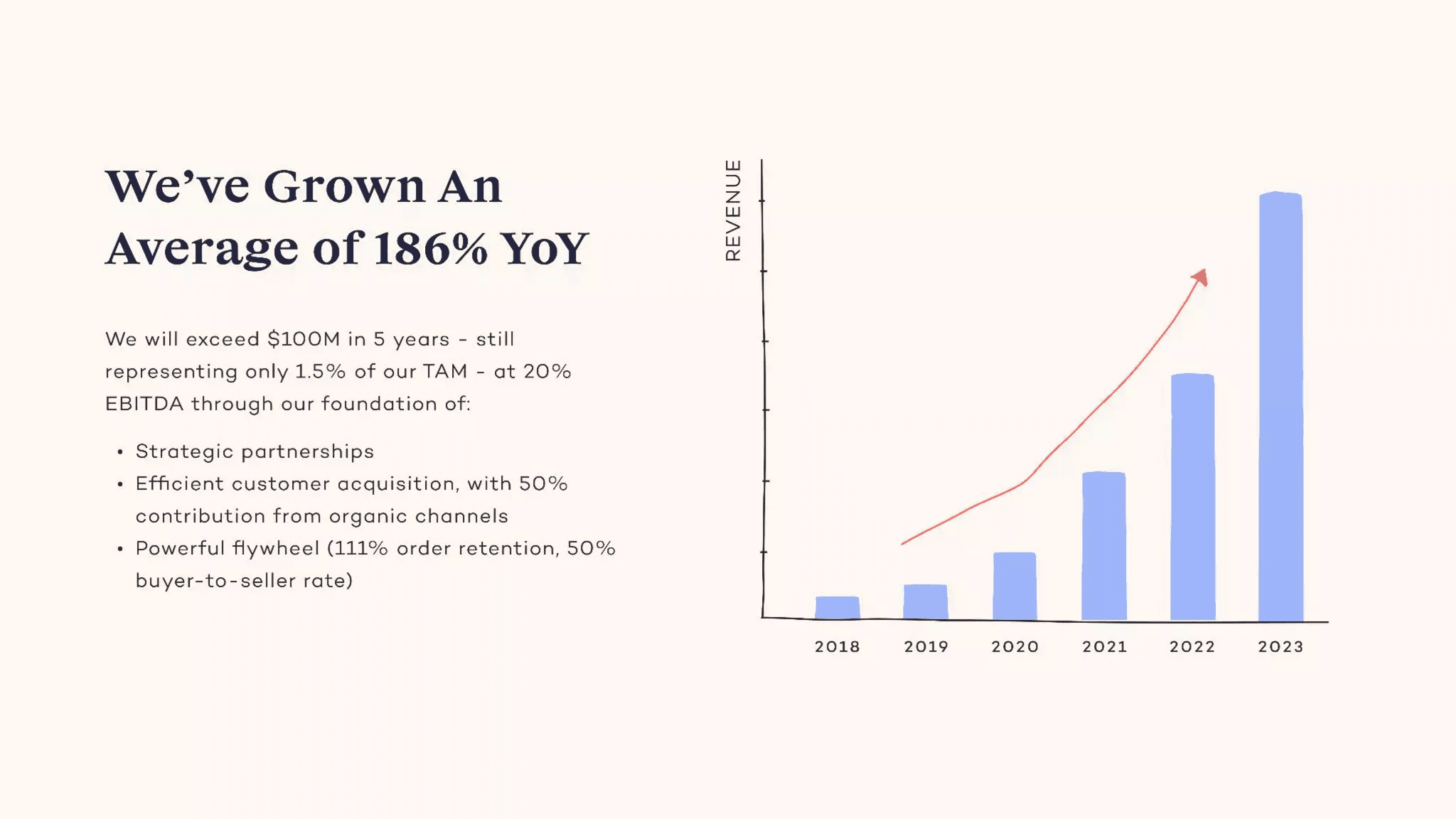
Careerist (source):
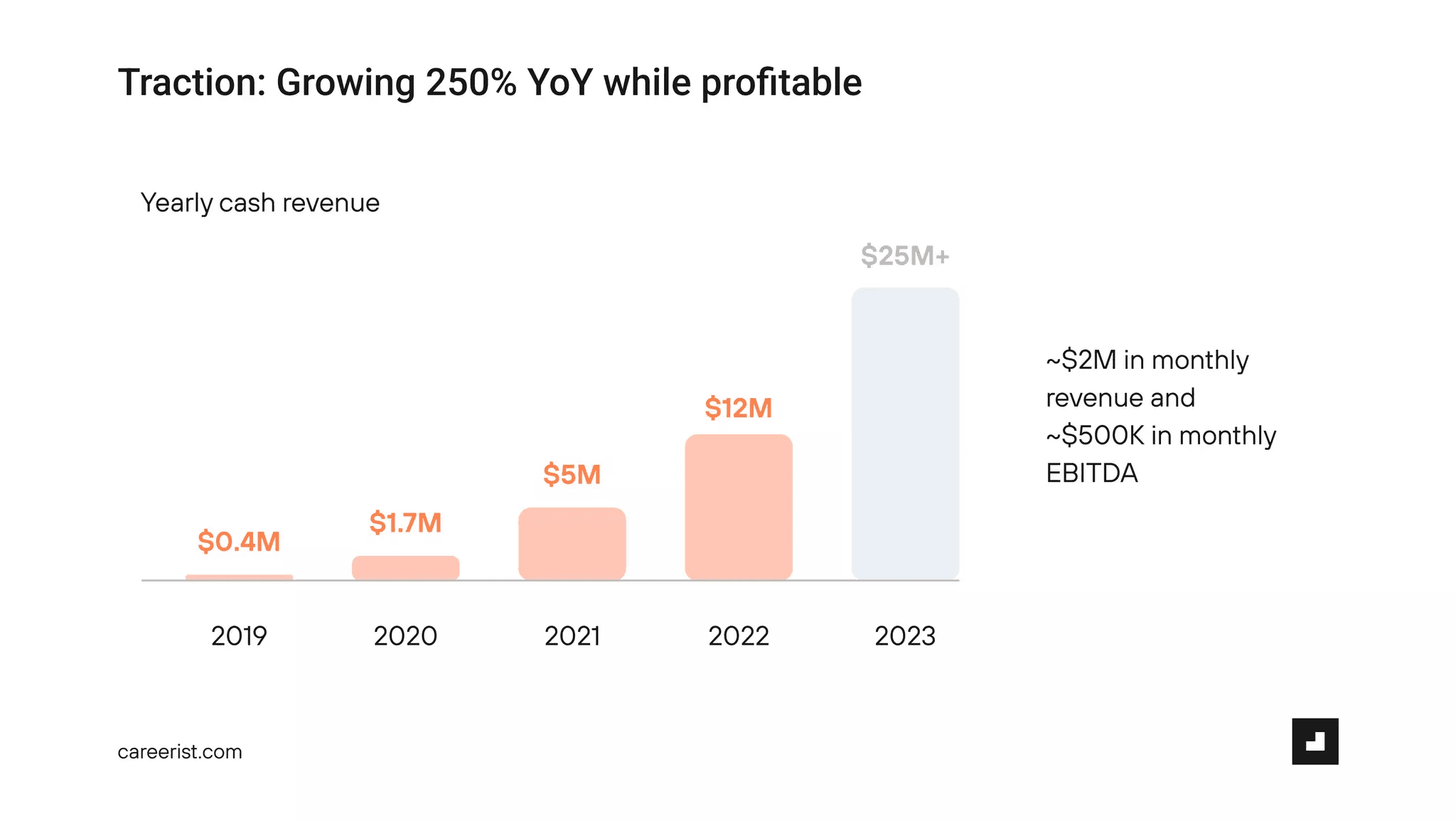
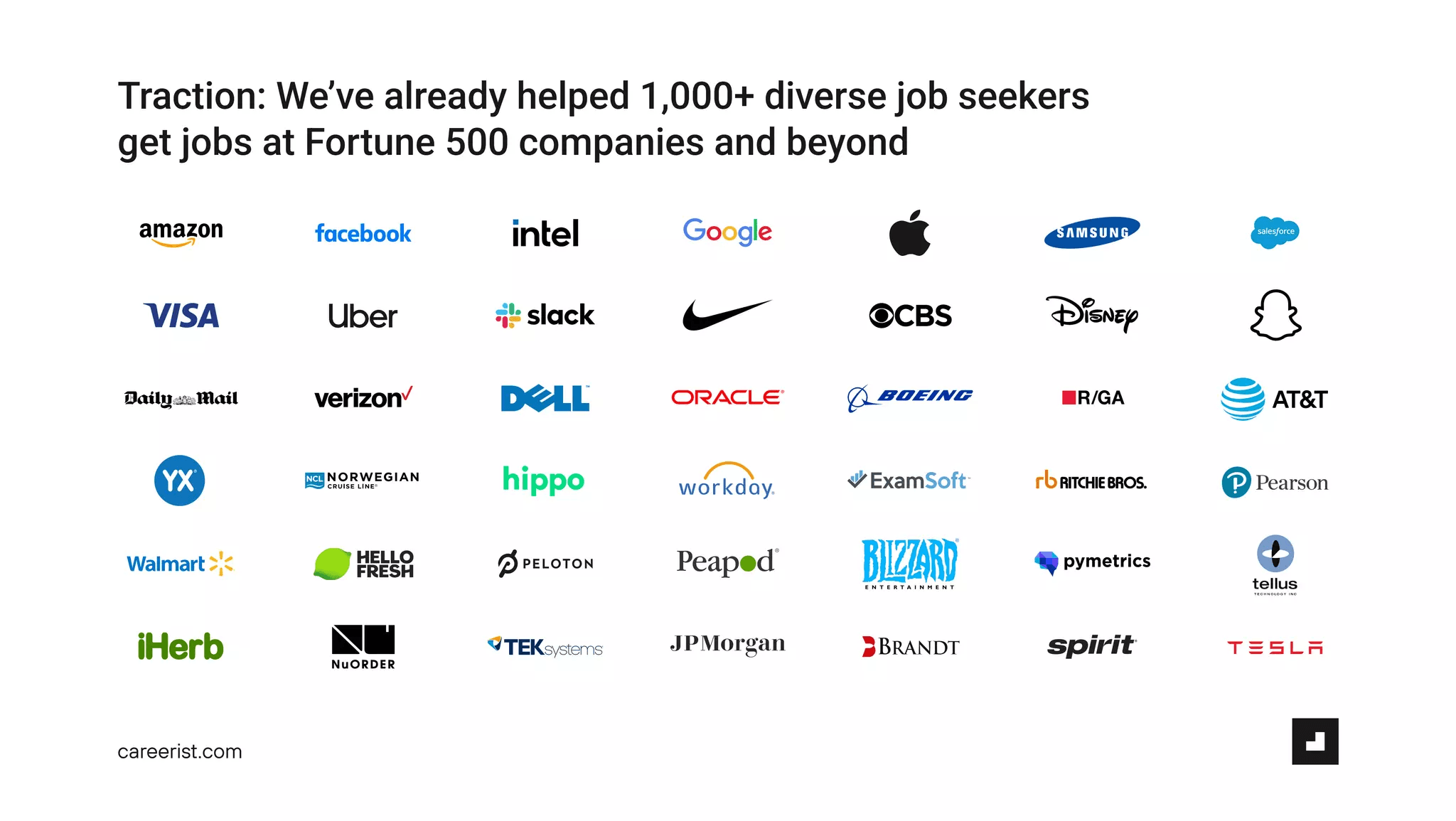 Yalochat (source)
Yalochat (source)
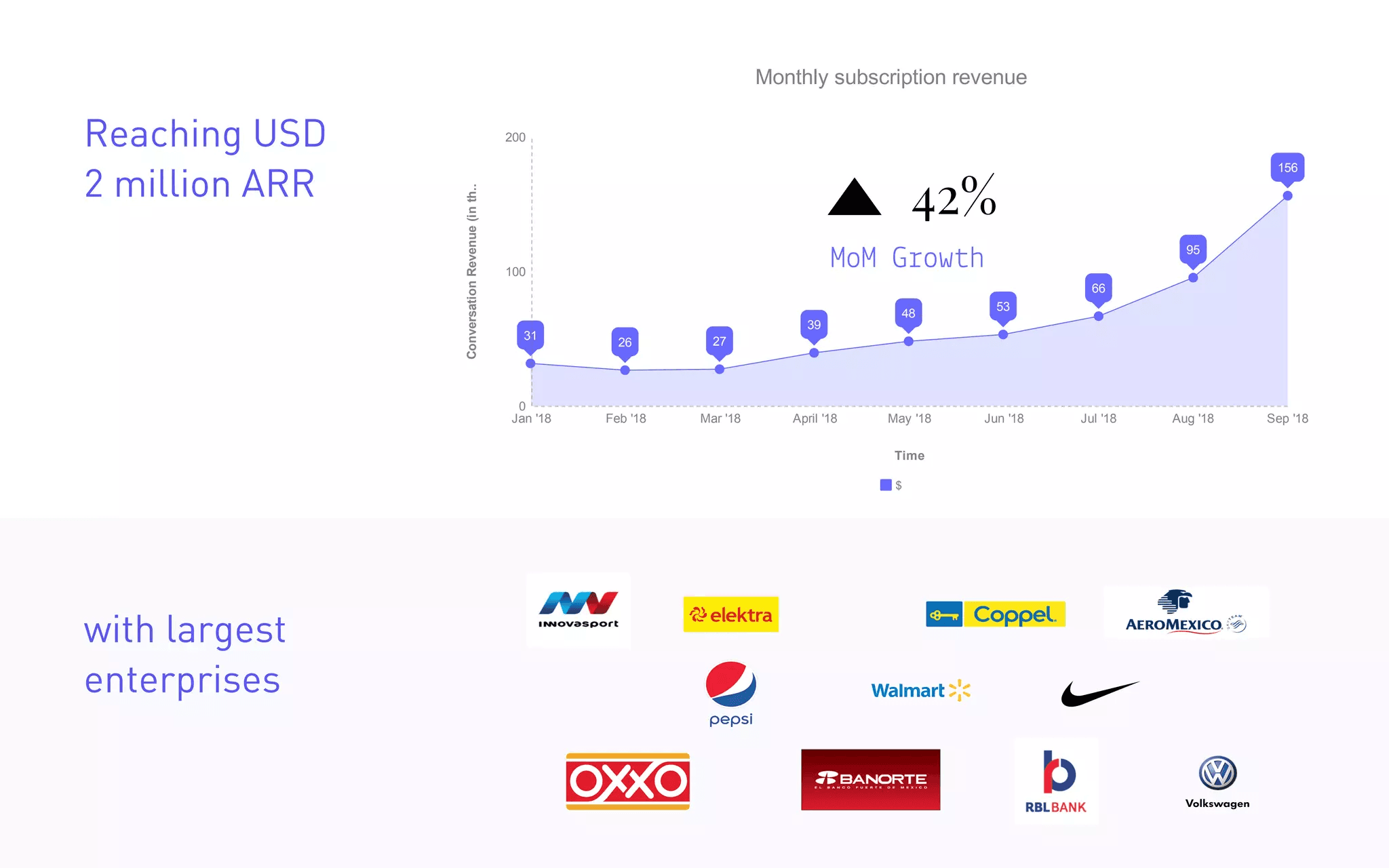
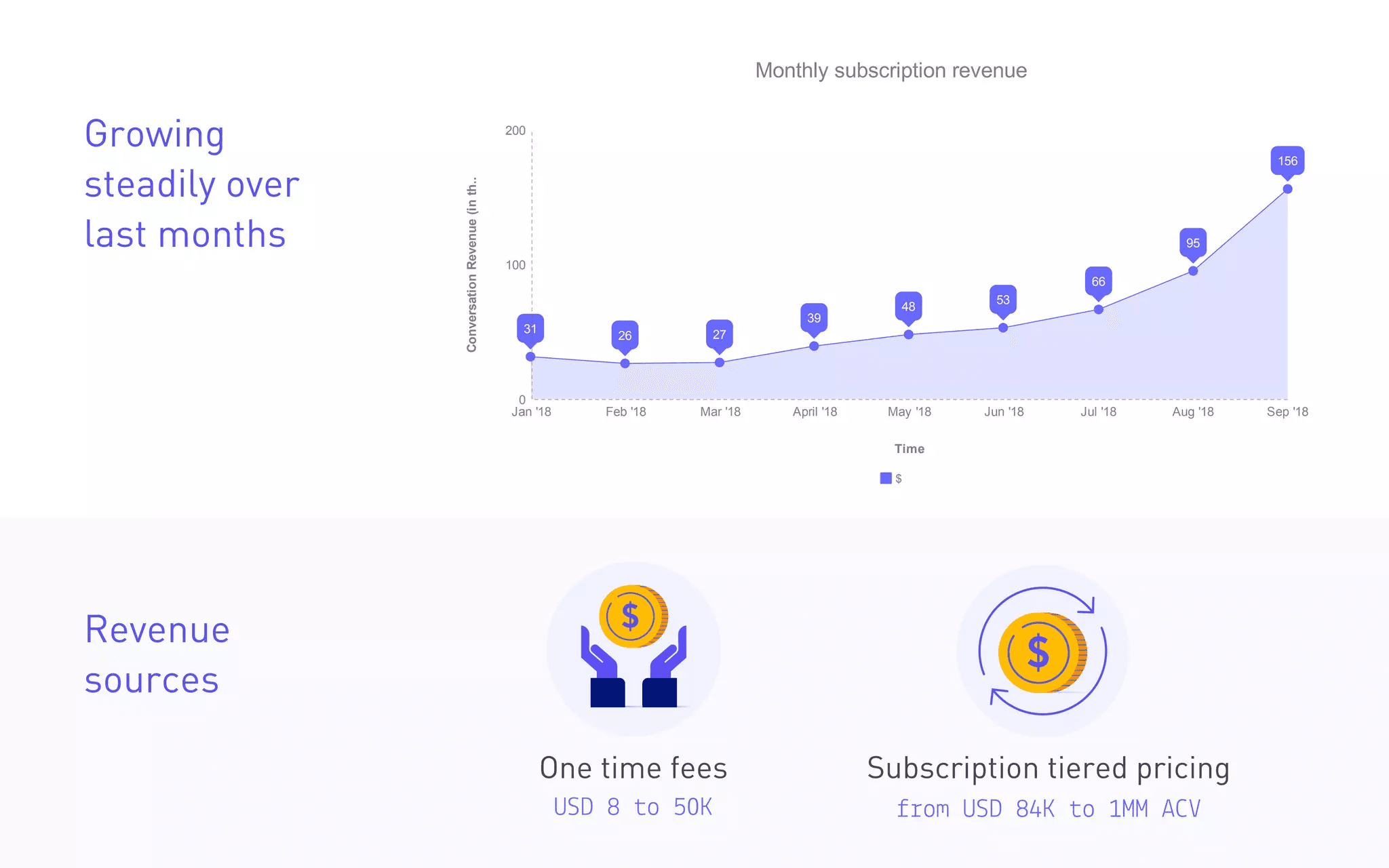 ANYbotics (source):
ANYbotics (source):
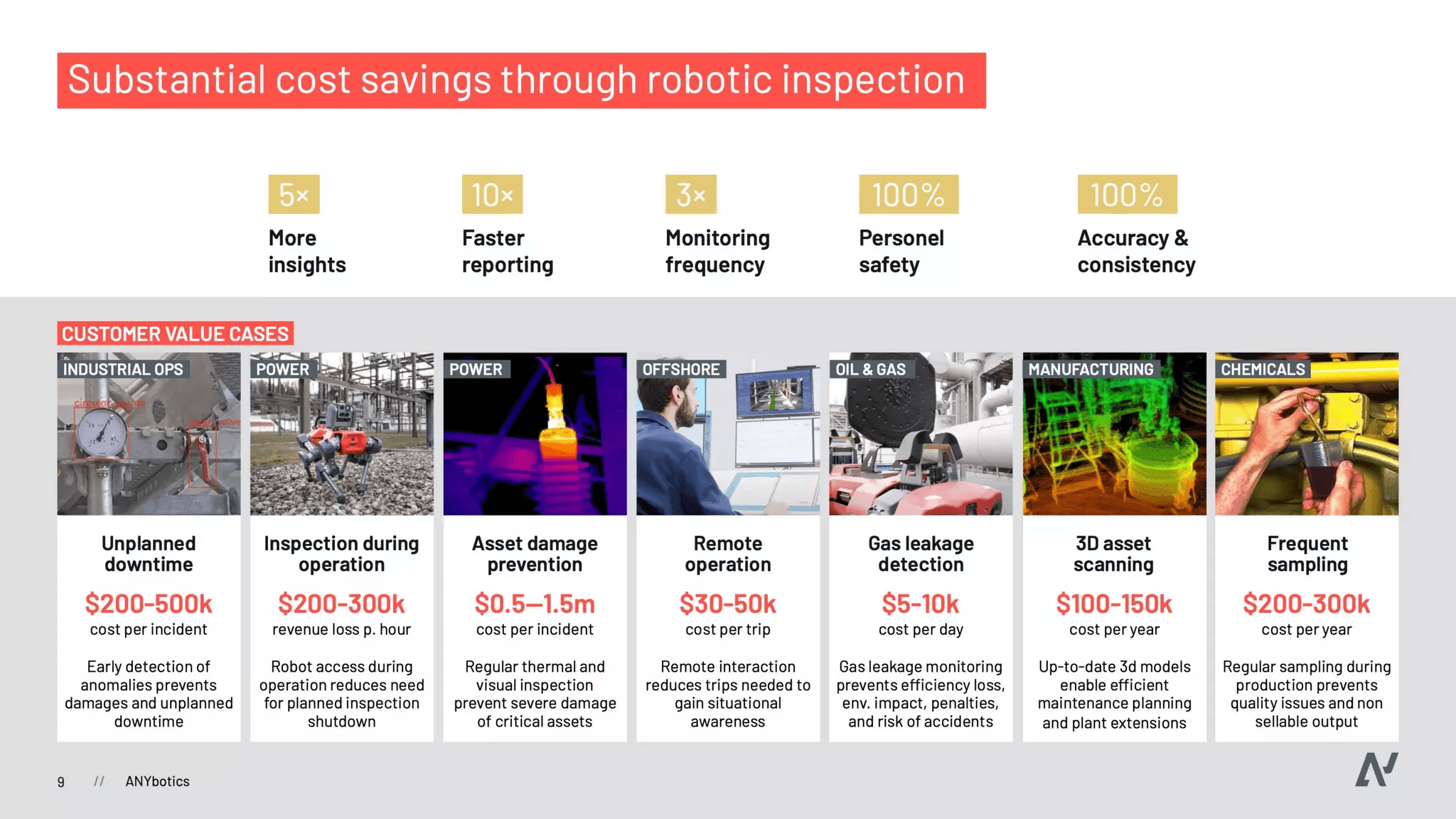
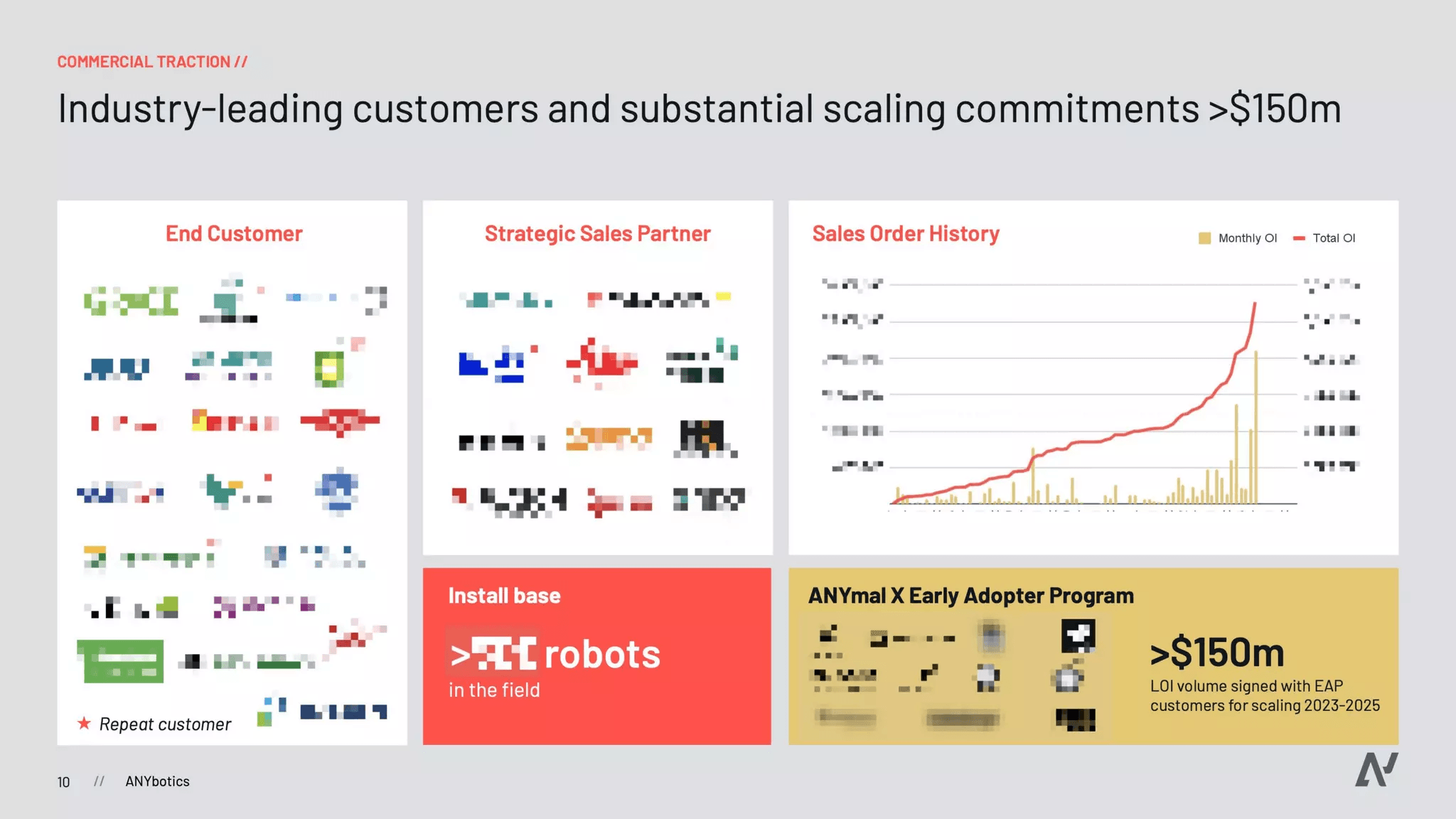 Tips and Tricks for a Successful Traction Slide:
Tips and Tricks for a Successful Traction Slide:
- Don’t forget to outline strategic partnerships and customer success stories.
- If your company is at an early stage and pre-revenue with product development, draw at least a timeline with achieved milestones. It can be the features list, letters of intent, the number of beta testers, downloads or newsletter subscriptions, participation in an acceleration program, or even winning a contest - whatever gives the so-called social proof to your business will work.
- Don't underestimate the power of storytelling – use your traction slide as a narrative canvas, illustrating the journey, challenges overcome, and lessons learned.
- Remember that context is key; tailor your traction metrics to align with industry benchmarks and investor expectations.
- Beyond the quantitative data, emphasize qualitative indicators like customer testimonials and success stories
- Crafting a compelling traction slide is not just about presenting achievements but instilling confidence in your startup's trajectory and potential for future success.
For more assistance in writing your Investor Pitch Deck and pitching your startup to investors, see the following articles:
- How to Create a Perfect Problem Slide in Your Pitch Deck?
- Tips for Crafting the Perfect Ask Slide In Pitch Deck
- Common Mistakes In Startup Pitch Deck To Avoid During Fundraising
- A Bunch Of Tips On Pitching Your Startup To Investors
- How To Write Elevator Pitch For Investors
- How To Create A Pitch Deck That Will Get Your Startup Funded
For even more insights on how to create a perfect investor pitch deck, click here to download Perfect Pitch - The Ultimate Startup Guide, an ebook prepared by a team of experts and investors addressing the question of how to make your startup fundraising process successful.
Looking for investors? Join Vestbee, an all-in-one platform for investors, corporates, and startups looking for funding, resources, and community.







